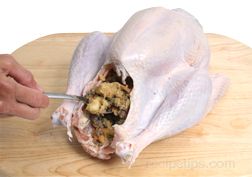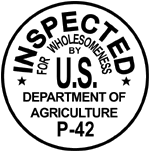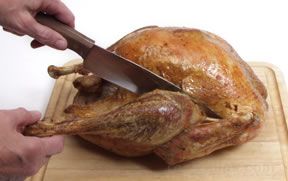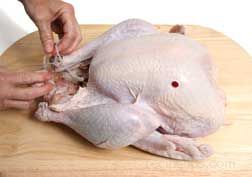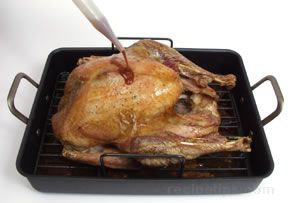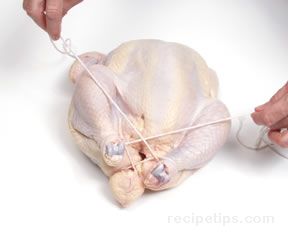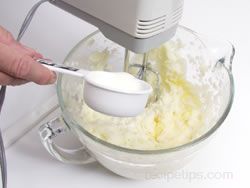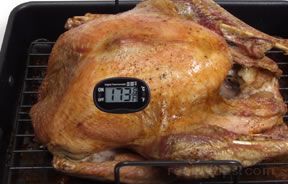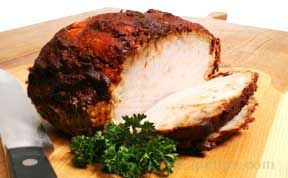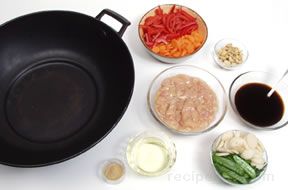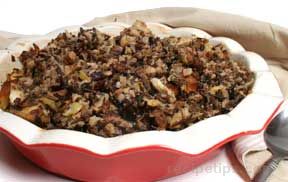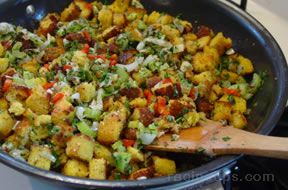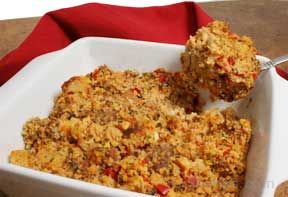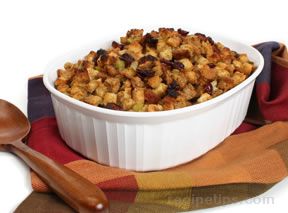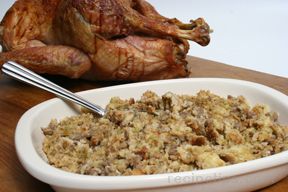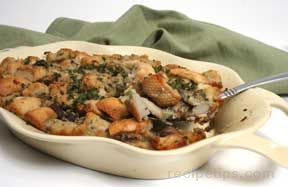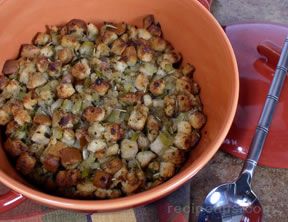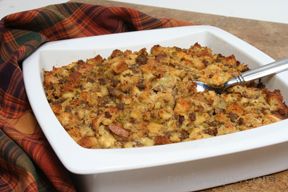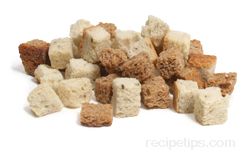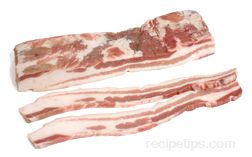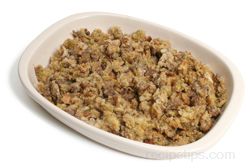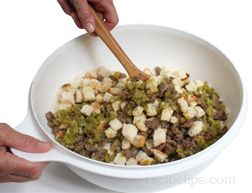|
Today's trend is to cook stuffing separately from turkey, the reason being safety and speed. Stuffing must reach a temperature of 165º F to kill harmful bacteria. By the time enough heat has reached the stuffing to render it safe, the turkey can be overcooked. Also, keep in mind that stuffing adds mass to the turkey, extending required cooking time.
FYI… the mixture baked inside a turkey is referred to as stuffing; if the mixture is baked outside of a turkey it is referred to as dressing.
Quick Tips
- When stuffing the turkey, allow as much as 3/4 cup of stuffing per pound of turkey. Do not over stuff the turkey as stuffing expands during the cooking process. Stuffing that is packed loosely will be fluffy and is more likely to cook thoroughly.
- If cooking stuffing seperately, allow up to 1 cup per guest.
- To moisten stuffing that seems dry after cooking, add chicken broth. Use only enough liquid to moisten, you do not want the stuffing to be soggy.
- If stuffing the turkey, make the stuffing slightly dry. It will expand and become moister as the turkey roasts.
- Most families have a traditional stuffing recipe. Try a new tradition of serving the traditional along with a new recipe.
Add Flavor
- Add thinly sliced or chopped tart apples, dried apricots, chilies, or sweet raisins for an updated flavor to traditional stuffing.
- If using instant stuffing, add some chopped nuts, mushrooms, bacon, sausage etc. to give the impression that the stuffing was made from scratch.
- To bring flavor and moistness to dry stuffing, add your favorite wine. Use wine sparingly, you do not want the stuffing to be soggy.
Basics of stuffing a Turkey
|
In order to prepare the turkey for stuffing, remove the neck and giblets, which are usually placed inside the body cavity. Wash the turkey inside and out with cold water. |
|
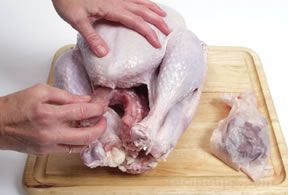
|
| Pat the surface dry with paper towels. |
|
 |
Be sure any stuffing that has been cooked, or ingredient that is cooked, is cooled completely before inserting into the cavity of the turkey. The turkey should not be stuffed until just before it is to be cooked, to reduce the risk of bacterial growth is reduced. Insert the stuffing into the body cavity. Be sure not to overstuff. The stuffing will expand during cooking due to the absorption of the juices from the Turkey.
Food Safety
- Allow for the extra cooking time required for a stuffed bird. Always use a meat thermometer to verify that the temperature of the stuffing has reached a minimum of 165°F.
- Remove the stuffing from the turkey before the turkey is carved to avoid cross contamination.
- Leftover cooked stuffing should be refrigerated and used within 1 to 2 days and should never be frozen for use at a later date.
- NEVER stuff the turkey in advance. The stuffing may promote rapid growth of harmful bacteria. Stuff the turkey immediately before cooking.
- Leftover stuffing that has been cooked inside the turkey should be reheated to a minimum temperature 165°F.
- If the stuffing has not reached 165º F by the time the turkey is done, scoop the stuffing into a baking dish and cook in the oven until it reaches a safe temperature.
|



